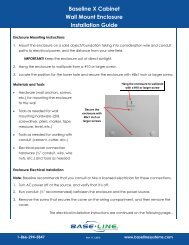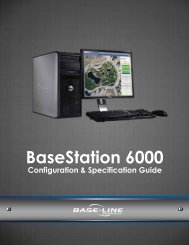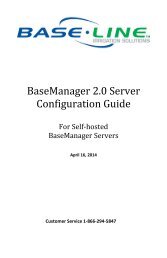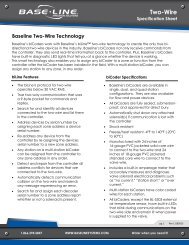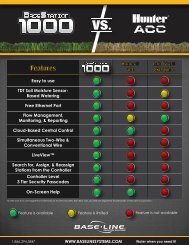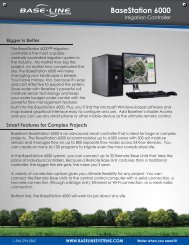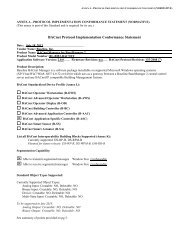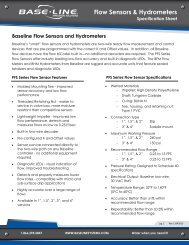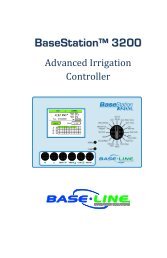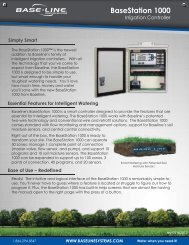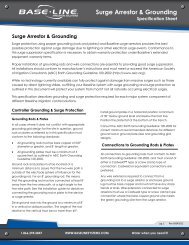Watering with Soil Moisture Sensors - Baseline Systems
Watering with Soil Moisture Sensors - Baseline Systems
Watering with Soil Moisture Sensors - Baseline Systems
Create successful ePaper yourself
Turn your PDF publications into a flip-book with our unique Google optimized e-Paper software.
©2011, <strong>Baseline</strong> Irrigation SolutionsTypically, the application rate of the sprinkleroutpaces the intake rate of the soil. So you need tobe aware of the slowest infiltration rate perzone/station. (See Not All Irrigation <strong>Systems</strong> AreCreated Equally on page 11 for more information onzones/stations). You can deal <strong>with</strong> this issue by usingthe Intelligent Soak Cycle feature of a <strong>Baseline</strong>controller. Read An Important Note on IntelligentSoak Cycles on page 12.Estimating water infiltration can be greatlycomplicated by slope, compaction, and variations inground cover or soil structure. The graph is areasonable starting point; however, the mostpractical way to figure out how much water can be applied is to turn on the sprinklers and time howlong it takes before you see runoff, then subtract a minute or two and make this your cycle time.The soil dries out in somewhat the opposite way that it gets wet. Evaporation on the surface causes thesoil to dry out from the top down, which causes the plant to rely on the deeper roots to access thenutrients such as minerals and elements that are dissolved in the available water. Allowing the surfaceto dry out between irrigation cycles helps reduce the incidence of disease and in many cases canimprove the plant’s water-use efficiency.Topography of the SiteYou also need to consider the “lay of the land” when you are estimating water needs. The slope of yourirrigation site will affect runoff and infiltration. The typical assumption is that surface water runs off aslope, but factors such as the percent of the slope, the shape of the slope, and the ground cover on theslope greatly influence the infiltration rate.Plants Are DifferentThe roots of a plant do more than just keep it anchored to one spot — they draw water and dissolvednutrients from the soil up through the plant and out through the leaf. This process is calledtranspiration. Different plants have different transpiration rates at different stages of growth, but allplants transpire. The nutrients dissolved in this water provide the plant nourishment.The plant plays an important role in determining when to irrigate. Unfortunately, there are a lot ofmisconceptions about the amount of water that plants really need. Some plants that are categorized asdrought-tolerant, water-wise, or native will survive <strong>with</strong> limited water, but when water is present, theybecome water hogs and put out rampant growth. Rather than estimating a plant’s water needs based ona general category, it’s better to observe that plant carefully and determine its water-use efficiency(WUE). This process supports your goal of watering as infrequently as possible and promoting deeperplant roots while minimizing the incidence of disease. Remember, too, that proper irrigation practicescan maximize a plant’s WUE by increasing its rooting potential and allowing the plant to access as muchwater and nutrients as possible.<strong>Watering</strong> <strong>with</strong> <strong>Soil</strong> <strong>Moisture</strong> <strong>Sensors</strong>9 | P age



